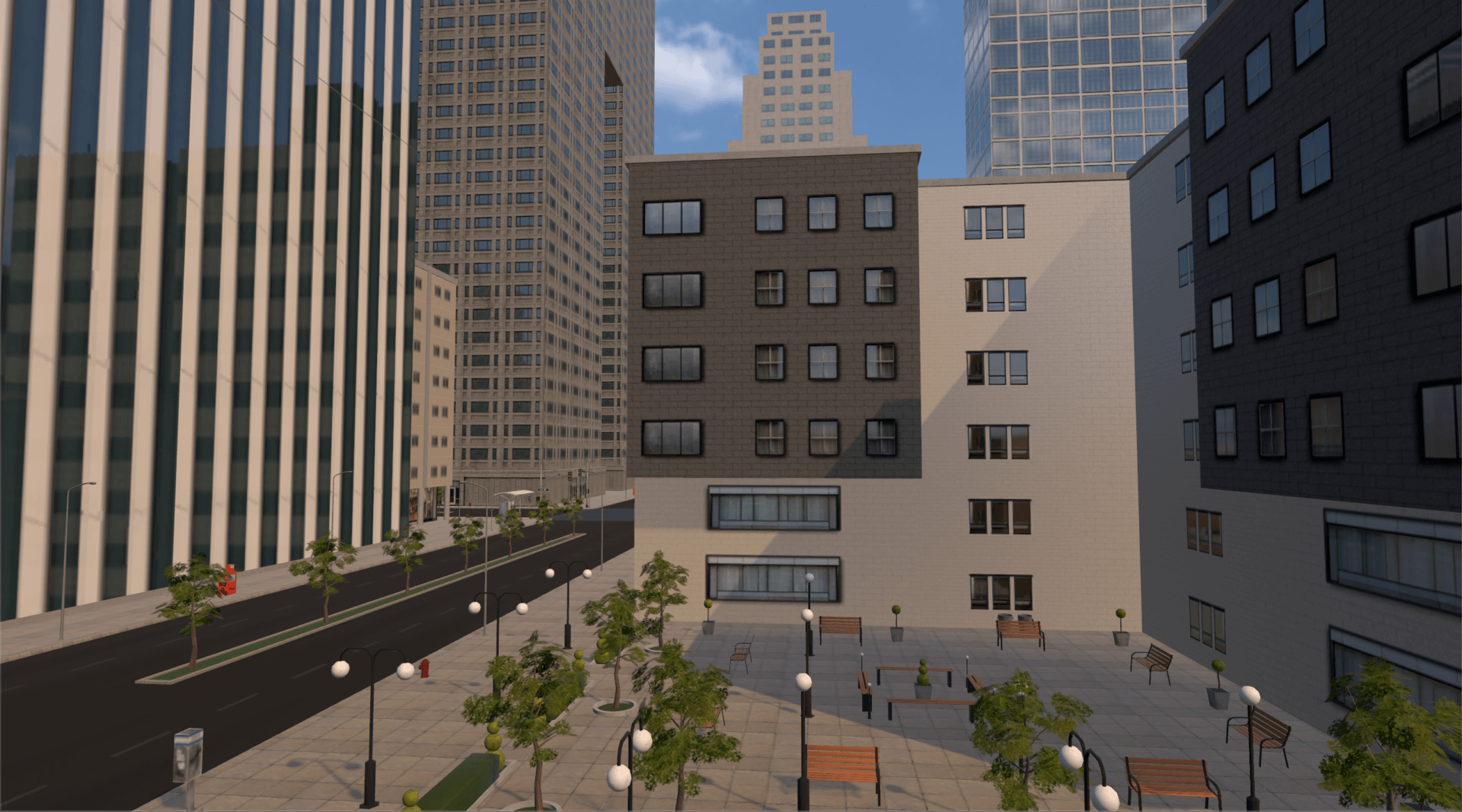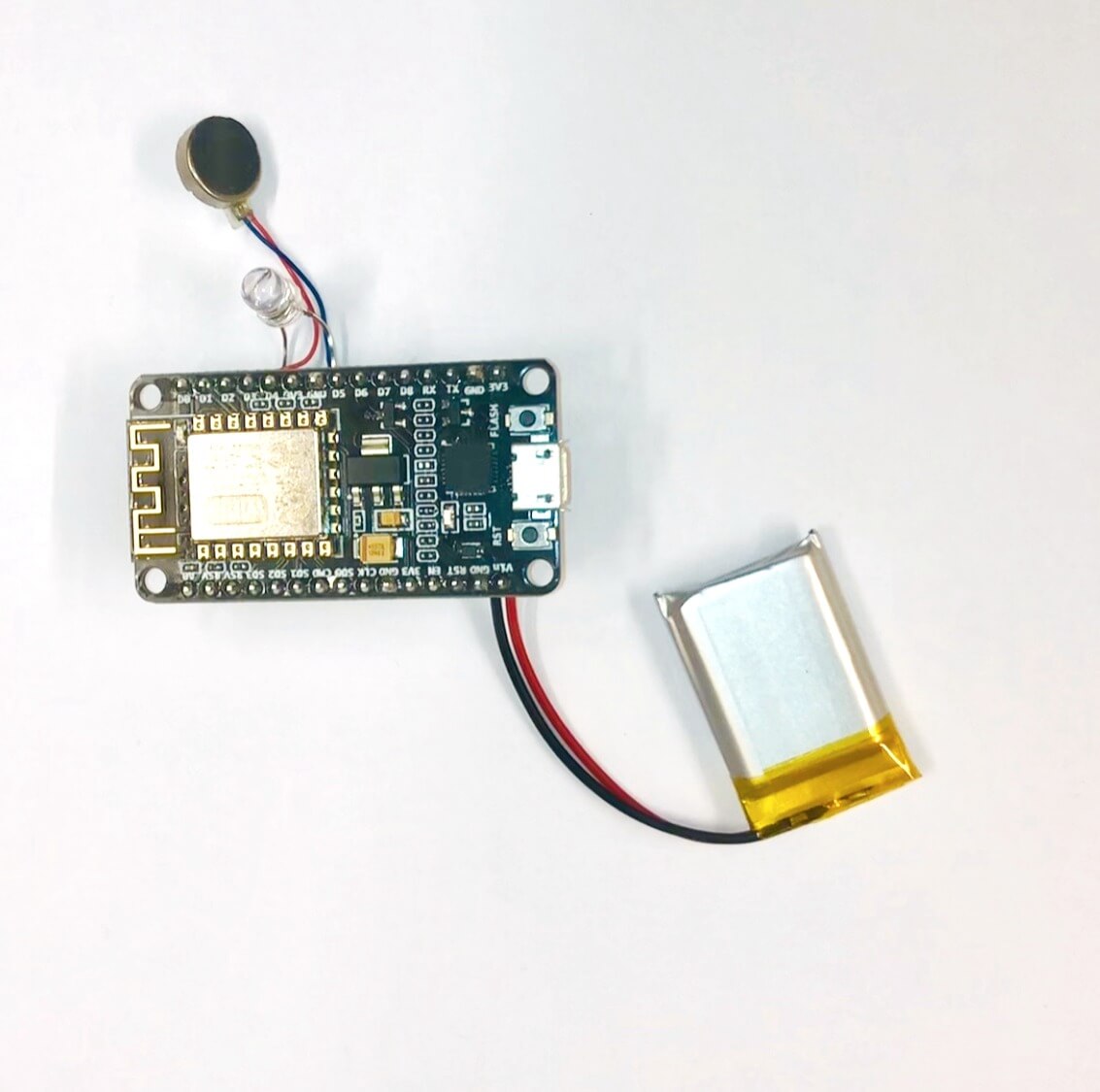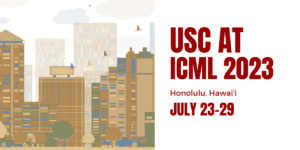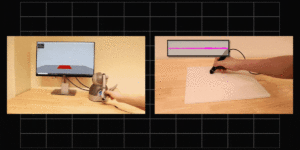
Day mode of Overcome (Photo/Naghmeh Zamani)
“Overcome.”
This was the name chosen by a group of USC Viterbi School of Engineering students to embody their vision of developing a virtual reality game for over 10 million people worldwide living with Parkinson’s disease. Many of these patients’ mobility is impacted to the extent where even crossing the street can be challenging.
Symptoms such as stiffness, uncontrollable shaking, gait and balance problems are the first warning signs. According to the Parkinson’s Outcomes Project, the largest-ever clinical study of Parkinson’s done by the Parkinson’s Foundation, 71 percent of people living with Parkinson’s for at least 10 years, are susceptible to falls. The serious injuries caused by falls, particularly in older patients, can lead to disability, social isolation, and even nursing home placement.
How it works
Traditional physiotherapy is centered around strength training, stretching, and movement practice, usually in a clinic. However, studies have shown that activity performed in the context of the environment, like say, stepping over an obstacle, aids long-term retention in motor skills far more than simply being told to lift one’s foot.

The VR game is played while walking on a treadmill (Photo/Naghmeh Zamani)
“Overcome” does exactly that.
Patients roam a virtual modern city, complete with roads, pavements, buildings, and cars, and with an option of day/night mode, as they walk on a treadmill. “We wanted to keep the environment realistic in terms of design,” said Adim Abass, a USC Viterbi master’s student in the Department of Computer Science. They gain points by avoiding obstacles such as chairs, paper, plastic cups, etc. that are randomly generated on the sidewalk. However, a problem arises: the VR environment lacks the dimension of touch, which makes it not only unnatural, but also disconcerting when they walk into an object.
Viterbi students have made the VR experience more immersive by introducing a haptic feedback component in addition to audio feedback. When the patient comes into contact with an obstacle, a micro-controller alerts a vibration motor and they sense a vibration warning them to change their path.
“Haptics add the sense of touch to virtual environments.”
Naghmeh Zamani
Naghmeh Zamani, a USC Viterbi Ph.D. student researching in the Haptics Robotics and Virtual Interaction Lab, deconstructs the need for haptics. “Haptics add the sense of touch to virtual environments. The appropriate force and vibration applied to the user’s hand or body help them experience touching a virtual object.”
Moreover, patients are asked to categorize certain objects with halos into, say, recyclables and non-recyclables. “Overcome” simultaneously flexes the patient’s cognitive abilities by adding this categorization task to enhance memory.

Haptic feedback through a microcontroller (Photo/Naghmeh Zamani)
VR vs reality
The biggest advantage of using virtual reality as opposed to walking in an actual park or on the streets is that it allows patients to get their recommended daily exercise in a more controlled and safe environment.
Patients find it difficult to walk on uneven surfaces and usually walk at a slow pace. When lifting a coffee cup is a Herculean task, to venture outdoors and see people rushing by can be startling and discouraging, even. A game-like scenario in VR eliminates those problems and could make daily activity much more enjoyable and thus consistent, which is critical for recovery. “Our solution is not a substitute for being outdoors, but it eases the initial phase of rehabilitation,” Abass affirmed.
Engineering+
Living in an era of interdisciplinarity, which USC Viterbi Dean Yannis C. Yortsos coined as “the Engineering+ era,” allows USC Viterbi students to use their engineering, innovation, and design skills to address challenges in other fields. Presented with this project as part of the Augmented, Virtual and Mixed Reality course offered at USC Viterbi by the GamePipe Laboratory, Abass and Zamani immediately jumped on board, as did computer science master’s students Manjunath Shetkar, Menghan Li and Saumya Dureja.

The task is to avoid obstacles and classify them (Photo/Naghmeh Zamani)
Indeed, enhancing virtual reality is one of the 14 Grand Challenges for Engineering set forth by the National Academy of Engineering.
“In this class, I learned not only about developing VR games, but also about Parkinson’s disease and how people suffering from it cope every day,” Abass said. “This is another motivation. It’s why I chose to study engineering.”
VR in healthcare
“Overcome” is part of a bigger project led by James Finley, an assistant professor of biokinesiology and biomedical engineering and director of the Locomotor Control Lab at the USC Division of Biokinesiology and Physical Therapy.
Finley’s project, funded by the National Institutes of Health, aims to develop virtual reality as a technique to enhance physical training and improve engagement in the context of rehabilitation. It has two main aims: developing the VR application and understanding the science and skill-learning behind VR and usability testing.
Finley explains that using VR as a tool gives patients a graded exposure to obstacles, provides an engaging and fun approach to physical therapy, and tracks their progress.
Several hospitals already use VR rooms for Parkinson’s patients to undergo physiotherapy. However, “Overcome” could take it to the next level with its haptic feedback. The team hopes to deploy it on actual patients in the near future.
“One of the great things about this project is being able to work with these student teams from different majors – computer science, biomedical engineering, biokinesiology and physical therapy and cinematic arts,” Finley said. “We each bring a unique expertise to the table and we learn from each other.”
Published on August 1st, 2019
Last updated on November 8th, 2022











